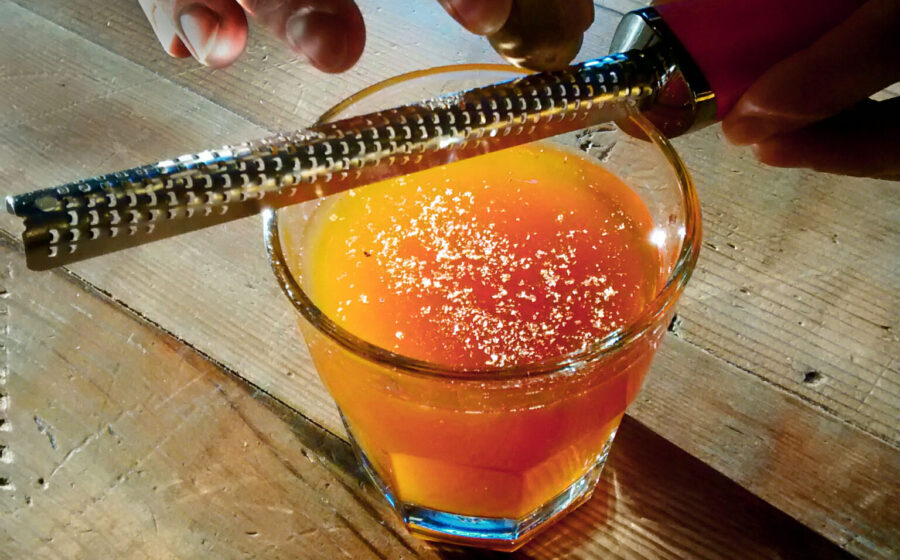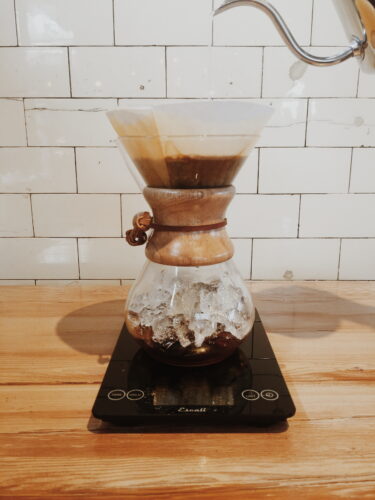[A]fter completing a successful string of holiday punch parties—including a gigantic batch of Glasgow Punch for The Rose Establishment’s staff holiday party —I decided to keep the theme going with a New Year’s drink special. This is basically a seventeenth century–style punch, but with coffee in place of the traditional arrack or rum, since The Rose Establishment doesn’t have a liquor license. I reworked my standard punch recipe to to highlight our coffee and tea while still staying true to what old-school punch should be. This recipe will make just over a gallon of chilled punch, but it can easily be scaled down for smaller portions.
Ingredients
2 qt. chilled coffee
2 qt. chilled rose black tea
16 oz. turbinado sugar
3 large oranges, or enough to yield 10 oz. orange juice
3 lemons, or enough to yield 6 oz. lemon juice
Whole nutmeg
Handful of cardamom pods (optional)
First, we’ll start by making an oleo-saccharum—an oil-sugar made from the citrus peels. It’s an old punch-making trick that uses sugar to extract the oils of the citrus fruit, giving the punch a bright, intensely aromatic element that the juice alone lacks. Peel the oranges and lemons using a Y-shaped vegetable peeler, removing as little of the white pith as possible. Place the peels in a punch bowl or other large bowl and cover with the turbinado sugar. Using a muddler or similar blunt object, grind the sugar into the peels for 3 to 5 minutes until the peels release much of their moisture. Let this sit for one hour to extract the remaining oil.
Once, while making a batch of this punch for The Rose, I impulsively threw a handful of green cardamom pods into the oleo-saccharum before letting it sit, with delicious results. The punch is still excellent without it, though.
Next, juice the oranges and lemons, and strain the juice—you should end up with sixteen ounces of fruit juice total. Add the juice to the oleo-saccharum and stir until all the sugar is dissolved. You now have approximately thirty-two ounces of what is called the “shrub”—the sweet and tangy base for the punch. Strain or scoop out the citrus peels, or leave them and let them float in the punch for decoration.
To the shrub, add the two quarts of chilled coffee and two quarts of chilled rose black tea to taste—I like this punch from recipe, some baristas liked it with a little more or less coffee or tea. At The Rose, I made a couple iced Chemex brews of Four Barrel Coffee’s Guatemala Las Cañas for the chilled coffee portion, but you can really use any type of good, strong cold coffee. If you don’t want to serve it all at once, you can use a ratio of one part shrub to four parts coffee and four parts tea to mix it as needed.
Serve chilled in a punch bowl and garnish with freshly grated nutmeg, or serve from a pitcher and grate nutmeg over each glass before serving.
—Cody Kirkland is the manager at Salt Lake City’s The Rose Establishment.
















